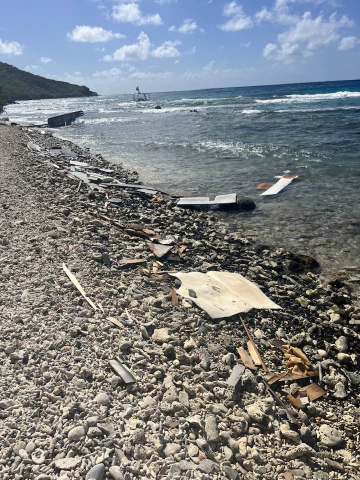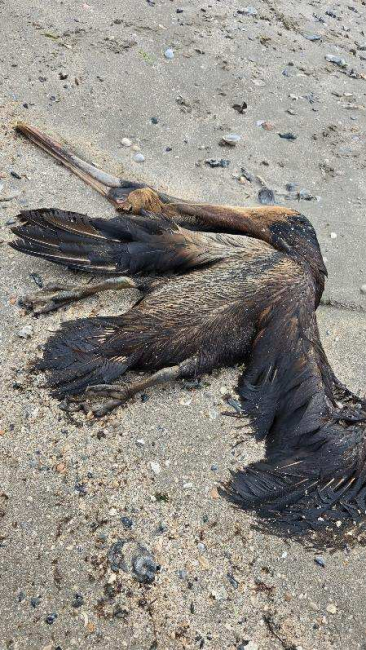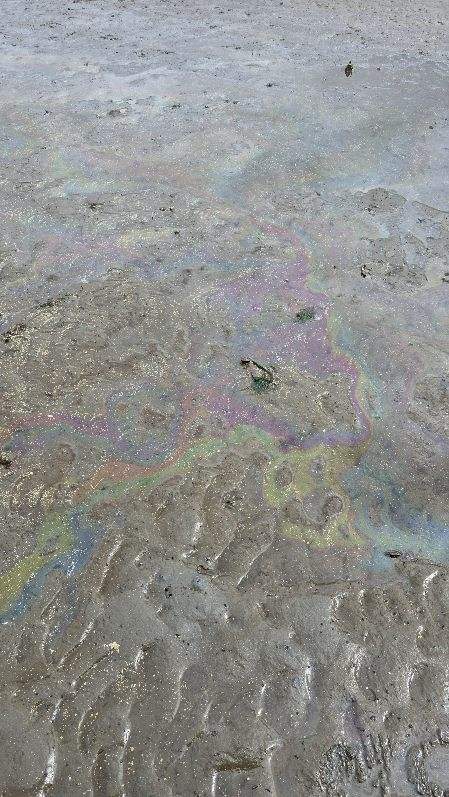Every month, NOAA’s Office of Response and Restoration’s (OR&R) Emergency Response Division provides scientific expertise and services in support of spills and other coastal and ocean emergencies. Our support ranges from producing oil spill trajectories that estimate where a spill may spread; to identifying possible effects on wildlife and fisheries; to estimating how long oil may stay in the environment. This support is to the U.S. Coast Guard (USCG) as the federal lead for coastal zone spills, and also assists other Unified Command members including state and industry leads for response operations. We also receive requests to track and model other floating objects, such as log booms or shipping containers that have broken free, whale carcasses, fish die-offs, and algal blooms.
In January 2025, OR&R provided response support for 17 incidents, including 15 new incidents in eight states, Washington DC, and one territory (Puerto Rico). Twelve of the new incidents were actual or potential oil spills, and three were chemical incidents (natural gas, urea, and a lithium battery fire).
OR&R staff prepared 103 incident reports and documents, including three fate and trajectory analyses. Three of the incidents this month were unknown volumes, but 12 of the incidents had volume estimates. Cumulatively, these incidents posed an approximate risk of more than 630,000 gallons of oil and 400,000 pounds of chemicals.
(Note: All spill volumes are approximate and based on initial information that may be updated after further investigation.)
Here are some of the incidents we worked on during January:
Passenger Vessel Runaway Grounded on Coral Reef; Southwest of Culebra, Puerto Rico
After a passenger vessel ran aground on a reef in Puerto Rico, NOAA scientists coordinated emergency consultations, provided best management practices for response actions, and reviewed vessel removal plans to ensure harm was minimized to the environment during the incident’s response.
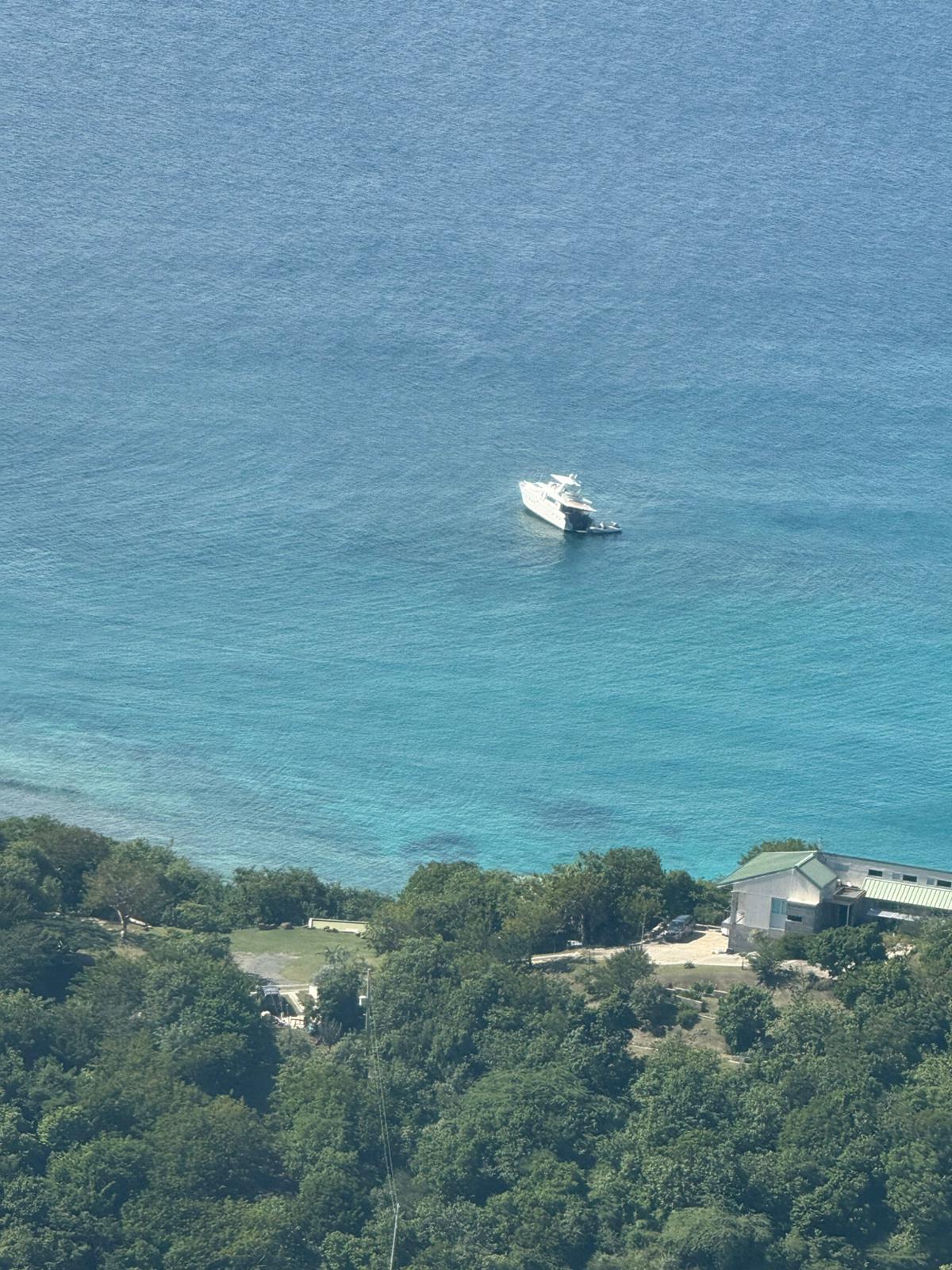
On December 30, 2024, the 78.5-foot passenger vessel Runaway ran aground on a reef in waters west of Ensenada Honda in Culebra, Puerto Rico. The vessel had 160 gallons of diesel fuel on board and 20 gallons of lube oil.
The U.S. Fish and Wildlife Service, OR&R, the NOAA Restoration Center, and Puerto Rico Department of Natural and Environmental Resources (DNER) supported USCG Sector San Juan in the response.
NOAA Restoration Center contractors and DNER personnel conducted pre-salvage surveys to identify coral species and locations. Three coral species listed as endangered or threatened under the Endangered Species Act were identified in the reef area of the grounding. Additionally, the area is identified as sea turtle and manatee habitat.
NOAA Fisheries provided the USCG with best management practices (BMPs) for vessel groundings and removal, as well as BMPs specific to sensitive habitats such as coral reefs, hard bottom habitats, seagrass beds, and mangroves. The NOAA Scientific Support Coordinator (SSC) based in OR&R helped coordinate submission of an Emergency Section 7 Consultation, in accordance with the Endangered Species Act.
Subject matter experts from the above agencies reviewed the vessel owner’s removal plans, which involved (a) removing the diesel fuel and the engine’s lube oil to eliminate the substantial threat from pollution; (b) contracting a salvage company to use air and roller bags to float the vessel off the reef; and (c) moving the vessel north to calmer water and a sand bottom area in Bahia Linda in Culebra where the vessel could be patched before towing to a location for complete repairs. After fuel removal, the vessel was ultimately unable to be refloated and pulled from the reef. Awaiting a new plan of action, the vessel began to deteriorate and broke apart, spreading debris across the reef and impacting threatened and endangered corals.
DNER personnel conducted an initial assessment of the impacted reef. OR&R’s Assessment and Restoration Division opened up initial funding for the incident and worked with NOAA Restoration Center counterparts via the NOAA Damage Assessment, Remediation, and Restoration Program to conduct preassessment work with regards to impacts from response actions.
Coordination with the vessel owner is ongoing to remove the debris from the reef and address the impacted corals.
Vessel Sinking, Adak Small Boat Harbor; Adak, Alaska
When a vessel sank and began sheening in a harbor in Adak, Alaska, OR&R aided the Coast Guard’s response by identifying vulnerable resources at risk in the area of the pollution and coordinating NOAA spot weather forecasts.
On January 8, the USCG contacted the NOAA SSC for Alaska regarding a 45-foot vessel that sank in the small boat harbor in Adak, Alaska. The harbormaster observed a sheen in the water and reported that harbor seals were swimming nearby. The total potential discharge from the vessel was 2,000 gallons of diesel.
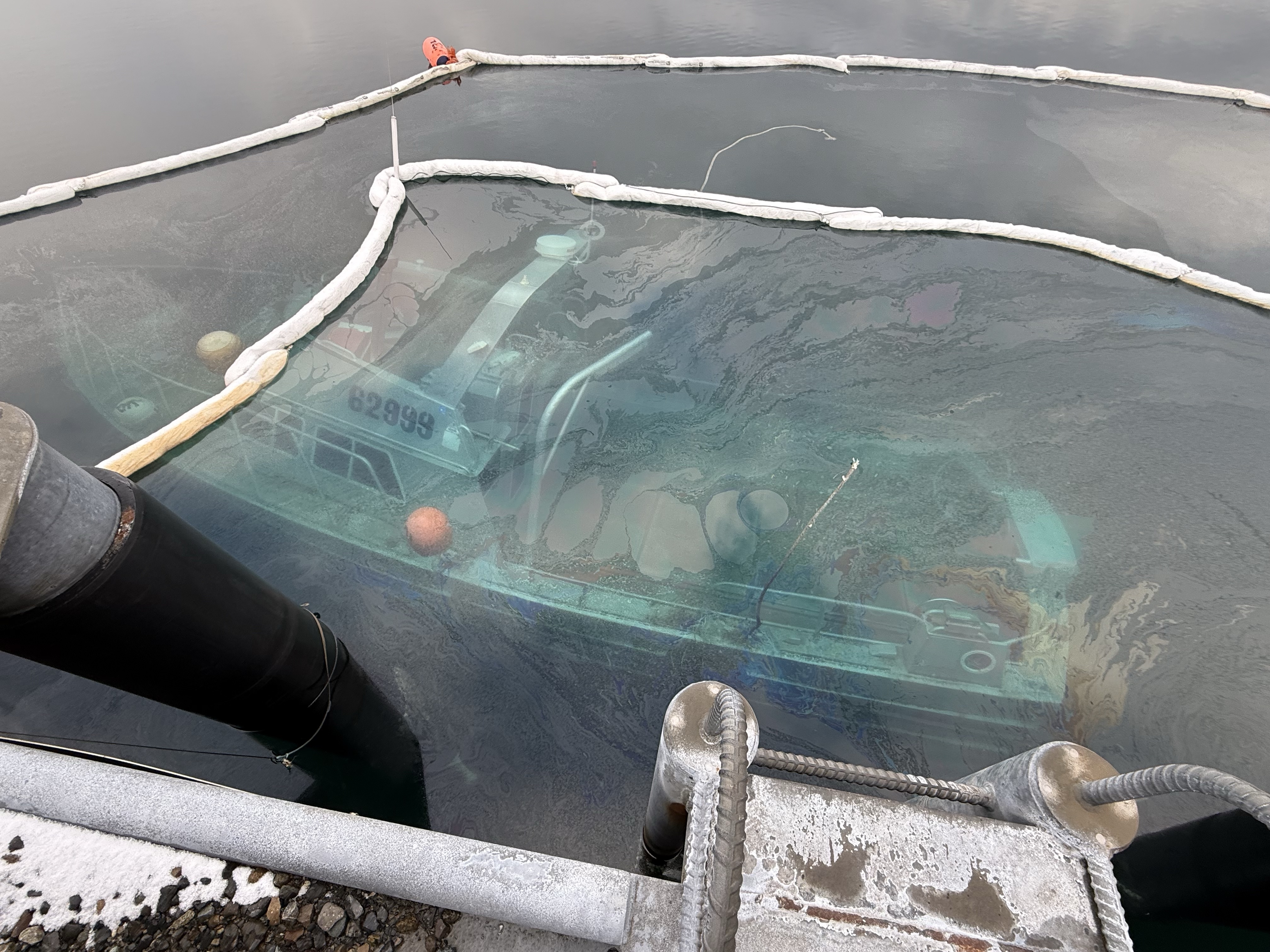
At the USCG’s request, the NOAA SSC provided an overview of the resources at risk in the area to inform response actions with a focus on protected species and habitat. Because severe weather can affect flights and safe travel to the remote island, the SSC also coordinated spot weather forecasting through the National Weather Service.
The USCG mobilized to Adak to meet with the responsible party, owner of the F/V Cutwater. The two parties agreed on a plan to refloat the vessel; however the responsible party left the country without recovering the vessel, which continued to produce sheen. The USCG hired a contractor to remove the vessel. The salvage company found that the vessel had not been de-fueled as the responsible party had advised, which explained the continued sheening.
An ESA Section 7 consultation with NOAA Fisheries has been initiated to assess whether vessel recovery is likely to adversely affect a listed endangered or threatened species or its critical habitat.
Mystery Sheen and Oiled Shoreline; Bay Long, Louisiana
To support a “mystery” spill in Louisiana that impacted shorelines and wildlife, OR&R deployed on-scene to provide trajectory analysis regarding the potential spill source, guidance on shoreline cleanup techniques and booming strategy, and advising on resources at risk in the area.
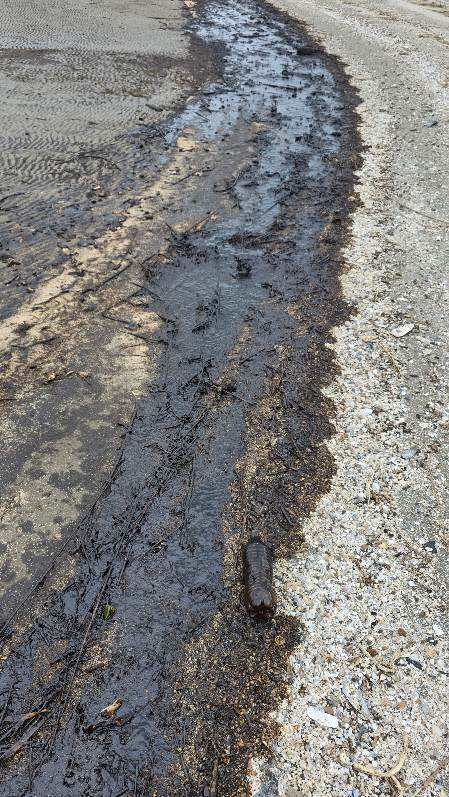
On January 27, the Louisiana Department of Wildlife and Fisheries (LDWF) reported oiled shoreline and sheen in Bay Long and Lake Grand Ecaille, Louisiana in addition to dead and oiled birds along the impacted shoreline.
Several days earlier on January 22, oil and gas exploration and production company Hilcorp had reported a five barrel crude oil spill in the vicinity; however, it was not evident if the two incidents were related. Hilcorp responded to the January 27 incident, conducting an overflight and hiring an oil spill removal organization to conduct beach cleanup.
The wildlife that LDWF encountered and reported on January 27 included two dead pelicans (one oiled), one dead oiled duck, and one dead oiled fish. It is possible that the deaths may be the result of freezing temperatures the prior week.
On January 28, the NOAA SSC deployed to the incident and accompanied USCG Sector New Orleans to the impacted beach and the potential source, a Hilcorp facility. The SSC advised USCG on appropriate cleanup techniques including manual removal of the oiled beach material and placement of snare boom along the shoreline. Over the next several weeks, the SSC and USCG continued to monitor the cleanup effort.
To assist with the determination of the spill’s source, OR&R oceanographers analyzed sheen sightings from LDWF, satellite reports from NESDIS Satellite Analysis Branch, and weather forecasts.
At the USCG’s request, OR&R also provided a report of vulnerable natural resources at risk in the area of the spill.
Passenger Jet and Army Black Hawk Helicopter Collide over Potomac River; Washington, DC
In the aftermath of a tragic aircraft collision in Washington D.C., OR&R scientists supported the U.S. Coast Guard by providing scientific expertise on the jet fuel spilled into the Potomac River and trajectory analysis of the movement and behavior of the spilled fuel.
On January 29, an aircraft collision between a U.S. Army Black Hawk helicopter and an American Airlines regional passenger jet occurred at Ronald Reagan Washington National Airport, taking the lives of all 67 passengers and crew. The incident occurred over the Potomac River, a U.S. navigable waterway, resulting in an active fuel discharge.
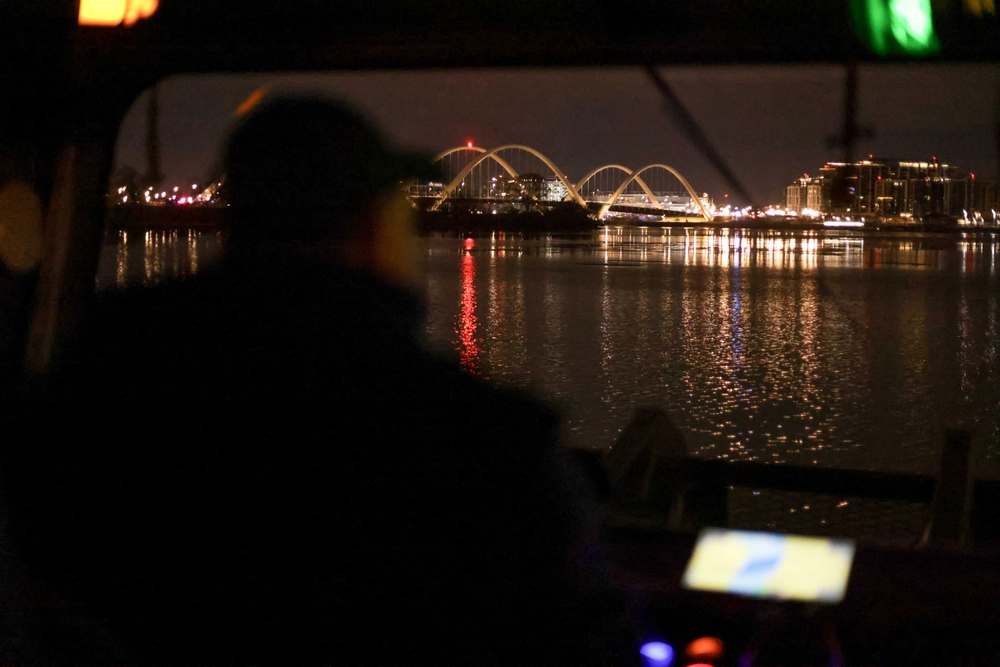
Search and recovery operations were conducted by hundreds of responders from city and federal agencies, including the crews from numerous USCG stations and cutters; staff from the U.S. Army Corps of Engineers; Navy dive teams; and Washington police and fire crews. Once search and recovery operations were complete, pollution response began to address the unknown amount of jet fuel in the Potomac River.
USCG pollution crews mobilized to respond to pollution caused by the incident. OR&R oceanographers prepared a spill trajectory for a worst case discharge of 3,000 gallons of jet fuel, based on the estimated amount of fuel on board the jet and the helicopter. The NOAA response team also provided National Weather Service spot forecasting, general information about the fate and behavior of jet fuels, and a trajectory analysis outlining the movement and behavior of the fuel spilled into the river.
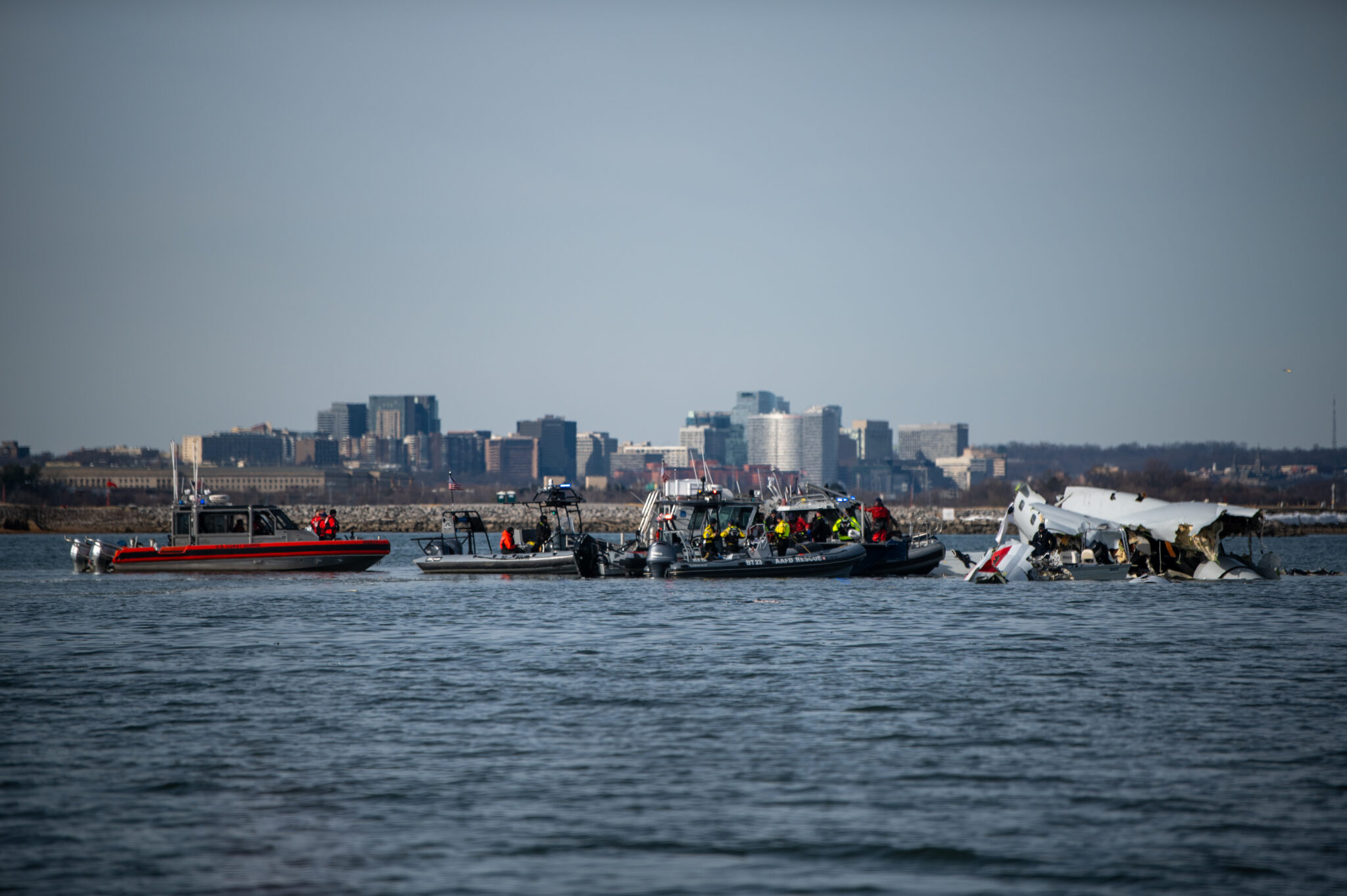
Here is the complete list of January’s incidents. Click on the links to find out more:
- Natural Gas Release from 16-inch Pipeline in Mississippi River; Shives, Arkansas
- Passenger Jet and Army Black Hawk Helicopter Collide Potomac River, Washington, DC
- Mystery Sheen and Oiled Shoreline; Bay Long, Louisiana
- Hydraulic Oil Leak from Integrated Tug/Barge Presque Isle; Duluth, MN
- Leak in TPIC Black Lake Tank Battery 5 Flowline; Hackberry, LA
- South Lake Hatch Oil Spill from Whitney Oil & Gas platform; Houma, LA
- Barge Grounding, Axel Lind Island, Prince William Sound; Valdez, AK
- Battery Facility Fire; Moss Landing, CA
- Sailboat Kuva Grounding, Thumb Cove; Seward, AK
- P/V Runaway Grounded on Coral Reef; Southwest of Culebra, Puerto Rico
- Vessel Grounding near Metlakatla; Annette Island, AK
- Spill from U.S. Navy Vessel at Newport News Terminal; Newport News, VA
- Bulk Carrier Aground in Delaware River, Philadelphia, PA
- Vessel Sinking, Adak Small Boat Harbor; Adak, AK
- Railcar Derailment, Mary’s River; Corvallis, OR



